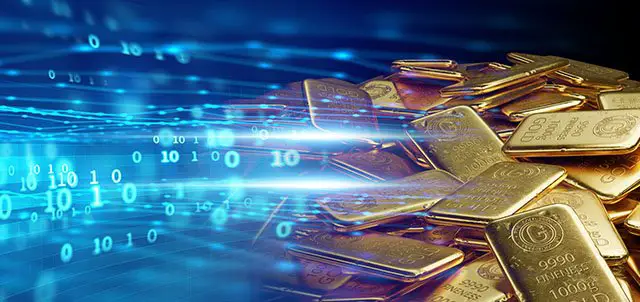Are you considering investing in precious metals? Wondering how to navigate the world of silver, gold, and other valuable metals? Look no further! This article is here to provide you with valuable tips for investing in precious metals. Whether you’re a seasoned investor or just starting out, these tips will help you make informed decisions, maximize your returns, and minimize risks. So, let’s dive right in and explore the exciting realm of investing in precious metals!
Tips for Investing in Precious Metals
Investing in precious metals can be a wise financial decision, offering stability and potentially lucrative returns. However, navigating the world of precious metals investing requires careful consideration and knowledge. In this article, we will provide you with valuable tips to help you make informed decisions when investing in precious metals.
1. Understand the Different Types of Precious Metals
Before diving into the world of precious metals investing, it’s essential to understand the different types of metals available. The most common precious metals for investment purposes include gold, silver, platinum, and palladium. Each metal has unique characteristics and varying levels of demand in the market.
Gold:
- Gold is considered the king of precious metals and has been a store of value for centuries.
- It is highly sought after for its rarity, durability, and resistance to corrosion.
- The demand for gold comes from various sectors, including jewelry, investment, and industrial uses.
- Gold can be purchased in various forms, such as bullion, coins, bars, or exchange-traded funds (ETFs).
Silver:
- Silver is an affordable precious metal with a wide range of applications, including jewelry, silverware, electronics, and solar panels.
- It is known for its industrial demand and is often considered a safe haven investment like gold.
- Investors can buy silver in the form of bullion, coins, bars, or ETFs.
Platinum:
- Platinum is a rare and valuable metal primarily used in the automotive, jewelry, and chemical industries.
- It is often more expensive than gold or silver due to its scarcity.
- Investors can purchase platinum in the form of bars, coins, or ETFs.
Palladium:
- Palladium is a versatile metal with applications in the automotive, electronics, and jewelry industries.
- It is highly valued for its catalytic properties in automobile exhaust systems.
- Investors can buy palladium in the form of bars, coins, or ETFs.
Understanding the characteristics and demand factors for each type of precious metal will help you make informed decisions about your investment portfolio.
2. Determine Your Investment Goals
Before investing in precious metals, it’s crucial to define your investment goals. Ask yourself what you hope to achieve and the role precious metals will play in your overall investment strategy. Some common investment objectives include:
- Preserving wealth: Precious metals can act as a hedge against inflation and economic uncertainties.
- Diversification: Adding precious metals to your investment portfolio can help mitigate risk and balance out other assets.
- Profit generation: Investors aim to buy low and sell high to generate profits from the price appreciation of precious metals.
- Long-term savings: Many individuals view precious metals as a long-term store of value for future financial security.
Having a clear understanding of your investment goals will guide you in making suitable choices regarding the types and quantities of precious metals to acquire.
3. Research the Market
To effectively invest in precious metals, it is crucial to stay informed about market trends and developments. Here are some important factors to consider:
Supply and Demand:
- Understand the current supply and demand dynamics for each precious metal.
- Factors like mining production, industrial demand, and investor sentiment can significantly impact prices.
- Stay informed about global economic conditions and geopolitical events that may affect supply or demand.
Price Movements:
- Monitor historical price movements and fluctuations in the precious metals market.
- Utilize charts and technical analysis tools to identify patterns and help predict future price movements.
- Consider factors like interest rates, currency fluctuations, and stock market performance that can influence precious metal prices.
Market Conditions:
- Stay updated on market conditions and investor sentiment towards precious metals.
- Read industry publications, financial news, and expert opinions to gain insights into market trends.
- Consider attending investment conferences or webinars to learn from industry professionals.
By conducting thorough market research, you can make more informed decisions about when and how to invest in precious metals.
4. Choose the Right Form of Investment
Precious metals can be acquired in various forms, each with its advantages and considerations. Here are the most common forms of precious metal investments:
Bullion:
- Bullion refers to precious metals in their purest form, typically in the shape of bars or ingots.
- Investors can buy bullion from reputable dealers and store it personally or in secure vaults.
- Physical ownership of bullion provides full control over your investment.
Coins:
- Precious metal coins are minted by government or private entities and hold value based on their metal content.
- Coins often have a higher premium over spot prices compared to bullion.
- They are highly liquid and often preferred by collectors or those looking for smaller investment increments.
Bars:
- Precious metal bars are larger than coins and mainly available in bullion form.
- They offer a cost-effective way to invest in larger quantities of metal.
- Bars are easily stackable and recognizable in the market.
Exchange-Traded Funds (ETFs):
- Precious metal ETFs are investment funds traded on stock exchanges, representing ownership of the underlying metal.
- ETFs offer convenience and liquidity, as they can be bought and sold like stocks.
- Investors do not physically own the metal but have exposure to price movements.
5. Consider Storage and Security
When investing in precious metals, it’s important to consider storage options and security measures. Here are some key points to keep in mind:
- Physical Storage: If you choose to own physical precious metals, you need a secure storage solution. Consider a safe deposit box at a bank, a personal safe at home, or a reputable private vaulting service.
- Insurance: Evaluate whether to insure your precious metal holdings against theft, damage, or loss.
- Authentication: Ensure the authenticity of your precious metal investments by dealing with reputable dealers and obtaining proper certifications.
- Avoiding Scams: Be cautious of fraudulent schemes or untrustworthy dealers. Research and choose reputable dealers with a long-standing reputation.
6. Monitor Your Investments
Investing in precious metals requires ongoing monitoring to assess performance and make necessary adjustments. Here are some tips for effectively monitoring your investments:
- Regularly track the market performance of precious metals through reliable financial sources and price-tracking websites.
- Periodically review your investment portfolio and reassess your investment goals.
- Consider consulting with a financial advisor who specializes in precious metals to gain professional insights and recommendations.
- Stay informed about any changes in tax regulations related to precious metals investments.
Remember, investing in precious metals should be a long-term strategy, and patience is often rewarded.
By following these tips, you can navigate the world of precious metals investing with confidence. Remember to stay informed, set realistic goals, and choose reputable sources for your investments. With careful consideration and strategic planning, precious metals can play a valuable role in your investment portfolio.
EP.4 SEASON 3 – 3 GOLDEN RULES OF INVESTING IN PRECIOUS METALS
Frequently Asked Questions
Frequently Asked Questions (FAQs)
What are some tips for investing in precious metals?
Investing in precious metals can be a lucrative venture. Here are some tips to consider:
What are the different types of precious metals available for investment?
There are several common types of precious metals that are popular for investment, including gold, silver, platinum, and palladium.
Where can I buy precious metals for investment purposes?
You can purchase precious metals from various sources such as reputable dealers, online platforms, and even some banks. It’s important to do thorough research and choose a trusted seller.
What factors should I consider before investing in precious metals?
Some key factors to consider include the current market conditions, the purity and authenticity of the metals, storage options, and any associated costs such as insurance or storage fees.
What are the benefits of investing in precious metals?
Investing in precious metals can provide a hedge against inflation, diversify your investment portfolio, and offer a safe haven during economic uncertainties. Precious metals also have a long history of retaining value over time.
Are there any risks involved in investing in precious metals?
Like any investment, there are risks involved in investing in precious metals. The price of metals can be volatile, and there may be additional costs involved such as transaction fees or storage expenses. It’s important to assess these risks and make informed decisions.
Should I invest in physical metals or opt for exchange-traded funds (ETFs)?
This choice depends on your preferences and investment goals. Physical metals offer tangible ownership and can be stored securely, but they require maintenance and storage costs. ETFs, on the other hand, provide exposure to precious metals without the need for physical possession.
Is it possible to make a profit from investing in precious metals?
Yes, it is possible to make a profit from investing in precious metals. However, it’s important to remember that the market can fluctuate, and timing is crucial. It’s recommended to consult with a financial advisor or do thorough research before making any investment decisions.
How can I stay updated with the latest trends and developments in the precious metals market?
To stay informed about the precious metals market, you can follow reputable financial news sources, subscribe to newsletters or blogs specializing in precious metals, and join online communities or forums where investors discuss market trends and share insights.
Final Thoughts
When it comes to investing in precious metals, there are several key tips to keep in mind. Firstly, diversification is crucial – spreading your investments across different metals can help mitigate risk. Secondly, stay informed about market trends and fluctuations to make informed decisions. Thirdly, consider working with a reputable dealer or broker who can provide expert guidance. Additionally, be mindful of storage and insurance options for your precious metals. Lastly, patience and a long-term mindset are key, as investing in precious metals often requires time to see significant returns. By following these tips for investing in precious metals, you can navigate this market with confidence and potentially grow your wealth.



